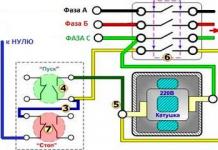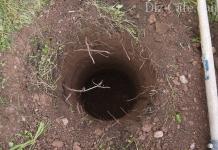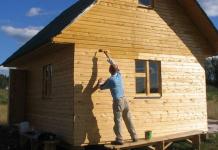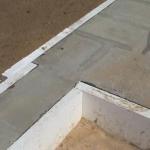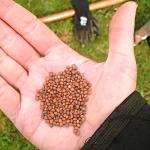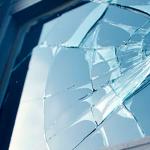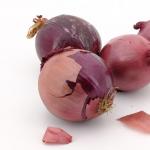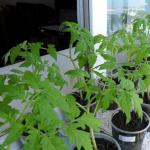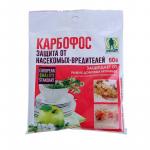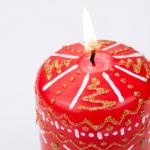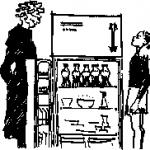Wood is a material that is not resistant to negative environmental influences. To ensure its reliable protection, it is necessary to prevent moisture from entering the surface, exposure to heat and the sun. Facing allows you to do all this. The main question is: how to cover the outside of a wooden house to provide protection, an attractive appearance and good thermal insulation performance.
Procedure for house claddingIt is important to note that the cladding should be installed only after the shrinkage of the wooden house has been completed.. The only exception is laminated veneer lumber, the shrinkage of which is insignificant (0.5%). It will take at least 2 years for a house made of untreated logs to shrink, and walls made of timber from 6 months to a year.
It is important to decide whether the exterior of a wooden house needs finishing. Cladding is appropriate mainly when the building is intended for permanent residence, that is, in winter too. In this case, the materials used for the work will perform not only a decorative, but also a thermal insulation function.
When using the house as a summer home, there is no need to insulate it, so there is no particular point in finishing it. Here it is better to treat the wall with protective compounds, such as impregnations or paints, since the appearance of any wooden house allows it to be left without additional finishing.
Exterior finishing of a wooden house is carried out in stages and includes the following types of work:
- cleaning and treating walls (various antiseptic compounds and fire retardants are used here);
- vapor barrier layer;
- assembly of the frame to which the insulation and sheathing will be attached;
- installation of thermal insulation;
- waterproofing protection;
- decorative finishing.
It is important to choose the right materials for each stage.
Antiseptics
 Treating your home with an antiseptic
Treating your home with an antiseptic These substances are extremely important for wooden structures. According to regulatory documents, they should be used to process any wood elements, regardless of their location. Materials for processing are available in two types:
- covering;
- glazing.
When protecting a building under the cladding, it is better to choose glazing compounds. They do not add color to the wood and lie on a transparent film. Coverings can also be used; they differ only in that they paint the surface of the walls.
Vapor barrier
This layer is necessary to protect the insulation from steam penetration from the room. If the insulation gets wet, it will no longer perform its function. Polyethylene film will help protect your house inexpensively, but its use for a wooden house is not recommended. Such buildings are chosen because of the ability of the walls to “breathe,” and the use of polyethylene reduces this to nothing. It is better to use more modern options, such as vapor barrier membranes that do not interfere with air exchange.
 Operating principle of a vapor barrier membrane
Operating principle of a vapor barrier membrane Installation of vapor barrier is carried out as follows:
- If the house is built from timber (including laminated timber), you will need to build a frame of slats for vapor barrier. This is necessary in order to provide a small gap between the film and the wall. When building a house from logs, this point is skipped. The slats have holes for free air movement. The accepted size is 20 cm.
- Using a construction stapler or nails, the film is attached to the slats or directly to the wall (for logs). In this case, it is necessary to lay the material with an overlap of 15 cm.
- All joints and fastening points are taped with adhesive tape.
Thermal insulation
 Installation of thermal insulation
Installation of thermal insulation The type of insulation is chosen depending on financial capabilities and preferences. Laying penoplex will not cost much, but such materials will block the ability of air to move through the walls, and the house will require additional ventilation. The most common material for cladding wooden houses is mineral wool. You can also use options such as ecowool. It is similar to mineral, but is made from flax, which is especially important when increased environmental requirements are imposed on the house.
Mineral wool is mounted on the frame. At the same time, it is important to provide a ventilation gap between it and the decorative cladding, which will allow excess moisture to be removed from the surface of the material.
To ensure such a gap, the thickness of the frame should be approximately 5 cm greater than the thermal insulation layer. The frame will also become the basis for attaching the sheathing.
After the insulation is laid, it is necessary to secure the wind-moisture-proof membrane.

Fastening is carried out with staples to the frame; the requirements for overlaps and gluing of joints are the same as for protection from steam. It is important not to mix up the sides of the film when attaching it. If a special windproof membrane is used, then its uneven side is adjacent to the thermal insulation, and the smooth side faces the outside air.
Sheathing options
When choosing how to decorate the facade of a wooden house, you should be guided by the characteristics of the materials and their appearance. In addition, such walls do not have high load-bearing capacity and will not be able to support massive panels. Products used for finishing should not be heavy, otherwise the load on the foundation and frame of the house will increase.
When deciding what to cover a wooden house with, you can consider the following options:
- Wooden lining. When using this finishing method, you can preserve the original concept of a wooden house - environmental friendliness and naturalness. The advantages include strength, ease of installation, soundproofing and thermal insulation characteristics. The disadvantage is the need to periodically paint the walls and treat them with antiseptics.
 A house clad in wooden clapboards looks very impressive and modern.
A house clad in wooden clapboards looks very impressive and modern. - Block house. The material can be called one of the types of wooden lining. Coniferous trees are used for production. The advantages are the same as the previous option, but the possibility of simulating a log house is added. The disadvantages include the high cost.
 A block house will give your home the look of a log house
A block house will give your home the look of a log house 
- Planken. One of the types of siding. Using this material you can imitate marble, brick or stone. A very expensive material, but at the same time very beautiful, environmentally friendly and does not require any maintenance at all.
 Covering a house with PVC panels
Covering a house with PVC panels The choice of how to decorate the facade of a wooden house depends on its future owner. If funds allow, you should give preference to materials made from natural raw materials.
As soon as we have a country house, we are looking for options for how to inexpensively decorate the facade of the house. There is a huge variety of materials on the modern market, so owners of private buildings have the opportunity to choose what suits them best according to their financial capabilities. You shouldn’t choose completely budget options, since after all, the residential property must be reliably protected.
We choose wisely!
Finishing materials for the home are aimed at giving the exterior a special look and protecting it from various external influences. To make the facade presentable, you need to take into account many little things:
Many people are looking for solutions on how to decorate the facade of a house cheaply. But it is worth remembering that the total cost of finishing consists of several components - the price of material, components, equipment and the price of installation itself.
We work with a wooden house
It is important to choose finishing materials taking into account the characteristics of the house and the material from which it is built. Thus, owners of wooden houses strive to emphasize its naturalness, naturalness, and therefore most often refuse finishing. But in some cases you cannot do without it, since wood is a material that is not resistant to various atmospheric influences. How to decorate the facade of a wooden house to emphasize its natural beauty? Before answering this question, it should be noted that the cladding process is not a simple one, since a number of the following works are required:

Material for a wooden house: brick or plaster?
Experts say that any timber or log cottage looks very beautiful in itself. But if you still want to give it a completely different look, then we suggest evaluating a number of materials. Before finishing the facade of a wooden house, you need to approach the process itself competently, not forgetting about such an important stage as insulation. Not the easiest way to finish a wooden structure is plaster, which is laid only on the sheathing. The good thing about using plaster is that you can give the facade an impressive appearance. Experts say this method is too labor-intensive and therefore not often used. In addition, plaster cannot boast of color variety.
Among the popular materials is brick: it can significantly transform the appearance of a building, ensure its high fire hazard, and increase the resistance of walls to frost and moisture. But the work is carried out only after the structure has completely settled; the bricks are fastened using special metal fixtures; moreover, the load on the foundation with this choice will become much higher, so you need to think about strengthening it at the design stage. Since finishing the façade of a private house with brick is not the easiest task, you should entrust all calculations to competent specialists.
Siding, PVC panels or tiles?
Very often, wooden houses are finished with siding. The popularity of the material is explained by its affordable cost and ease of installation. Experts say that such finishing will provide reliable and practical protection for your home. The advantage of choosing this solution is the variety of color schemes, that is, your wooden house can look different. So if you are looking for an inexpensive way to decorate the facade of your house, choose siding: it is easy to care for, it is durable and does not deteriorate under the influence of natural factors. In addition, the siding is installed on the frame, which means it will be possible to insulate the building.

PVC panels are rarely used in decoration, but their advantage is that they imitate different surfaces. In addition, they are resistant to mechanical stress. Tiles, which are attractive due to their practicality, look interesting on a wooden surface. But, as experts note, working with this material is not so easy.
House made of foam blocks
Many modern cottages are built on the basis of foam blocks and aerated concrete. The popularity of materials is explained by both the ease of working with them and durable operation. True, there are several nuances that should be taken into account before finishing the facade of a house from foam blocks:

To put the façade in order, experts advise using the following methods:
- ventilated facade: it can be erected using siding, lining, decorative panels;
- facing brick: its use allows you to think through ventilation holes, which will ensure natural air circulation between the wall and the finishing material;
- plaster mixtures;
- simple painting using materials that have good vapor permeability.
These are the best solutions for those who are looking for an option to decorate the facade of a house with aerated concrete.
Frame house
Such buildings attract attention because they are economical to construct. But you need to be more careful with the finishing, as there are a number of nuances that must be taken into account:

How to finish taking into account the above? Many experts recommend installing any suspended structures based on vinyl block houses and siding. This coating attracts with its affordable price, simple installation, reliability and durability, which is why this system is in high demand today.
A frame house looks beautiful when covered with clapboard, wooden siding, block house - in general, materials that emphasize the naturalness of wood. Such structures look solid, presentable and fit beautifully into the surrounding landscape. You can add some effect to the facade using facade decorative plaster. And finishing with tiles, natural or artificial stone will help express the individuality and solidity of the cottage.
Thus, we see that there are many options for how to decorate the facade of a house. But in order for your choice to be truly informed, you should pay attention to the merits of each material and its approximate cost.
Siding
This material is liked by both buyers and experts for its safety, ease of installation, ease of maintenance and beautiful appearance. Let’s say that in most European countries this material is most often used for finishing houses. And if you consider that manufacturers guarantee a service life of about 40 years, you can protect your home for many, many years. As for the price, the material costs on average about 200 rubles per 1 sq. m. m., if we talk about vinyl siding, the basement siding is more expensive - about 500 rubles per square meter. m. But still, for those who are looking for an inexpensive way to decorate the facade of a house, this material is best suited.

Plaster
This coating can make the facade of any home beautiful and worthy of attention. In terms of structure, we have a moisture-resistant and breathable material. There are many varieties of it - acrylic, mineral, silicate and silicone plaster. But in terms of texture and color scheme, the material is very limited, and before cladding it is necessary to additionally paint the facade. Experts note that this coating will last for 10 years, but it is not resistant to mechanical stress.
The process itself is not the simplest - for finishing a house with an area of up to 150-200 square meters. m will need at least 6-8 weeks. And you will need to prime the surface in advance to protect it from atmospheric influences. The cost of a kilogram of plaster is from 40 rubles. for 1 kg - this is the simplest variety; the expensive ones include silicate and silicone plaster - they cost from 100 rubles per kilogram. On average, about 3 kg of material is consumed per square meter.
Block house
How to inexpensively decorate the facade of a house if it is made of wood and you want to emphasize its natural beauty? Experts suggest paying attention to a type of lining - a block house, the front surface of which imitates a rounded log. Although environmentally friendly and natural, the material is not durable, and the appearance of the surface can be spoiled by cracks and other defects that are characteristic of wood. In addition, it will be necessary to constantly update the surface of the block house with protective agents. The cost of one square meter of material varies between 400-1000 rubles.

Ceramic brick
If the appearance of your home is more important to you than the cost of finishing, choose facing ceramic bricks. It attracts attention with its environmental purity and natural composition, frost resistance and durability, and good sound insulation. You need to decide on a color and texture solution in advance before finishing the facade of the house. Photos of such houses show that a more luxurious coating cannot be imagined. In addition, it will last for decades. True, in terms of cost, this material cannot be classified as budget - after all, high quality and durability cannot be cheap. One square meter of cladding will cost from 1200 to 3000 rubles.
Facade tiles
Facade tiles are a modern and reliable building material. It is durable, moisture resistant, durable and is ideal if you are looking for a beautiful solution to the question of how to decorate the facade of your house. The photo of the finished surface emphasizes all its beauty, however, the installation itself is not simple. In addition, careful preliminary preparation of the surface is required, as well as control over the straightness of the seam. In terms of quality and aesthetics, facade tiles are not inferior to bricks, and in price they are much cheaper - 1000-1500 rubles per square meter.
A wooden house is the highest priority for many individual developers: it is environmentally friendly, it creates the most favorable atmosphere for human health, it heats up quickly and retains heat well. But wooden walls often require plating.
When choosing wall material for external façade cladding For your home, you need to know the pros and cons of each of the options on the market today. It is important that the chosen material is not only beautiful, but also practical and can protect your home from all adversity for a long time.
There are a lot of options for how to sheathe the outside of a wooden house - from lining to brickwork, and the possible outcome can only be limited by money and your imagination.
External cladding will give a new house a finished appearance, while an old structure will improve protection from the negative effects of the environment and remove visible defects.
For outdoor wall cladding A wide range of materials are used, including machined steel, aluminum, wood, stone, vinyl and PVC coating. External cladding of windows, doors, roofs - any areas at risk of moisture penetration is carried out.
 Lining- today is the simplest, most convenient, easily accessible and cheapest type of material for the exterior decoration of a wooden house. Anyone who has ever held a hammer or saw in their hands and accurately measures the distance with a ruler can sheathe the outside of a house with clapboards.
Lining- today is the simplest, most convenient, easily accessible and cheapest type of material for the exterior decoration of a wooden house. Anyone who has ever held a hammer or saw in their hands and accurately measures the distance with a ruler can sheathe the outside of a house with clapboards.
Lining was originally the name given to the wooden slats that were used to cover transport cars. So this name stuck to it.
Today, it is customary to call selected, specially treated wood clapboard. Simply put, lining is a cladding board.  The lining is produced in "tongue" and "quarter" and is divided into one and a half meter, six meter and three meter lengths. On opposite sides of the lining there is a groove and a ridge of equal size.
The lining is produced in "tongue" and "quarter" and is divided into one and a half meter, six meter and three meter lengths. On opposite sides of the lining there is a groove and a ridge of equal size.
The humidity of such a board should not be more than 10-15%. If the moisture content of the boards is higher, then after finishing the walls, in the process of further drying, the density of the connections between the boards will change and cracks will form, which will negatively affect the appearance of the house.  The house is clad with clapboard from bottom to top. The board is nailed with small nails to the wall with the ridge up, after which the next one is put on the ridge of the bottom board from above with a groove. Using small wooden wedges, the top board is pressed against the bottom board along the edges; if the board is long, in the middle. Then the top board is nailed down and the wedges are removed. And so on all the way to the roof.
The house is clad with clapboard from bottom to top. The board is nailed with small nails to the wall with the ridge up, after which the next one is put on the ridge of the bottom board from above with a groove. Using small wooden wedges, the top board is pressed against the bottom board along the edges; if the board is long, in the middle. Then the top board is nailed down and the wedges are removed. And so on all the way to the roof.
The wooden clapboard finish looks somewhat old-fashioned, but is environmentally friendly and vapor-permeable. Installing wooden lining is not difficult. After installation, impregnation or painting is required.  Wood is a material familiar to us all, environmentally friendly and relatively inexpensive for cladding a house ($4-7 per sq.m.). However, the initially neat appearance gradually ceases to be so.
Wood is a material familiar to us all, environmentally friendly and relatively inexpensive for cladding a house ($4-7 per sq.m.). However, the initially neat appearance gradually ceases to be so.
Wood does not withstand weather conditions and the appetite of insects as well and, like any wooden covering, is not able to withstand fire. Moreover, wooden cladding requires annual maintenance, which requires a certain amount of time and money. Some types of finishing work cannot be carried out year-round, for example, at temperatures below zero.  In contrast to the lining can be imitation timber, which is a spruce or pine board laid out horizontally without visible intermediate grooves.
In contrast to the lining can be imitation timber, which is a spruce or pine board laid out horizontally without visible intermediate grooves.
When laying such a board, the surface turns out smooth and beautiful. It is not without reason that imitation timber is used not only for the exterior decoration of a wooden house, but also for cladding bricks, blocks, logs and other materials.
It is worth noting that the spruce board used for exterior cladding of the house goes well with metal and stone. This combination gives the house a sophisticated sophistication and makes it stand out from the rest.
Recently it has become frequently used wood-polymer lining, which combines the best qualities of wooden lining and polymer materials.
It is moisture resistant, does not rot, does not require frequent maintenance, and can last for decades.
 Block house, as it is commonly called today, is a board made of coniferous trees; this material has a semicircular pattern on the front side.
Block house, as it is commonly called today, is a board made of coniferous trees; this material has a semicircular pattern on the front side.
Most of all, the block house is used when covering the outer part of a frame-type house. But even today it is not uncommon to see the use of rounded boards when finishing the facade of a wooden house.  The combination of wooden beams with a block house creates an elegant appearance that will delight not only its owners, but also guests, as well as all temporary visitors.
The combination of wooden beams with a block house creates an elegant appearance that will delight not only its owners, but also guests, as well as all temporary visitors.
It must be emphasized that the block house is not afraid of sudden changes in temperature and can withstand frosts and hot summer days.
Therefore, regardless of what region you live in, if the question arises of how to cover the outside of a wooden house, you can safely choose a block house as one of the ways to decorate the facade of your own home.
 Siding– these are separate panels that are very conveniently fastened together.
Siding– these are separate panels that are very conveniently fastened together.
Externally, siding is similar to plank cladding. Each panel has a snap lock and perforated nail edge. Siding strips come in different sizes. The length, as a rule, varies from 2 to 6 meters, width 10-30 cm, thickness up to 10 mm.  Manufacturers offer various types of siding - basement, ceramic, steel, wood, cement, aluminum, copper.
Manufacturers offer various types of siding - basement, ceramic, steel, wood, cement, aluminum, copper.
Siding has gained enormous popularity today. It is used for cladding private houses, office buildings, commercial premises, etc. The material has won such recognition due to its qualities - durability, strength, attractive and neat appearance.
The siding profile is made in two versions: “herringbone” (single fracture) or “ship plank” (double). This does not affect the quality of the material in any way, and the profile is selected only based on personal preferences.
The texture of siding most often imitates natural wood. To protect against impacts, scratches and corrosion, a special polymer coating or paint is used.  Siding retains its quality and original appearance for several decades. It perfectly protects the building from atmospheric agents.
Siding retains its quality and original appearance for several decades. It perfectly protects the building from atmospheric agents.
This is a very lightweight, easy-to-use material that looks great in any landscape. In addition, siding is environmentally friendly and easy to maintain. It is easy to clean and does not require periodic painting, unlike wood materials.
All types of siding for cladding a house are very easy to install and you can cladding the building yourself. Installation of siding does not require special skills, including careful preparation of the wall surface. On the contrary, it helps to hide many unevenness and other flaws.
Vinyl siding made from polyvinyl chloride. It consists of solid strips, which are also called panels. Each panel is a monolithic sheet, which is given the desired shape.  Vinyl siding does not crack, dry out, rot, and is not of any interest to insects, unlike wood materials. Another advantage of siding is that it does not support the combustion process, but simply melts under the influence of high temperatures.
Vinyl siding does not crack, dry out, rot, and is not of any interest to insects, unlike wood materials. Another advantage of siding is that it does not support the combustion process, but simply melts under the influence of high temperatures.
PVC panels are used both for the construction of new buildings and for finishing old houses. Often, simultaneously with the installation of siding, the building is insulated, since it is very convenient to install insulation into the sheathing space.
Vinyl siding is available in standard sizes:
- length – 3000 mm, 3660 mm, 3730 mm, 3850 mm;
- width – 205 mm and 255 mm;
- thickness – 1.1 mm and 1.2 mm.
Advantages of PVC panels:
- low level of flammability;
- environmental Safety;  - resistance to atmospheric agents and chemicals. It has proven itself well in conditions of high humidity and moderate acidic or alkaline environments. Does not crack, does not warp in the sun and does not rot;
- resistance to atmospheric agents and chemicals. It has proven itself well in conditions of high humidity and moderate acidic or alkaline environments. Does not crack, does not warp in the sun and does not rot;
- operating temperature range 0t -50 to +50 degrees. Under such conditions, it does not burst and does not change the original shade;
- ease of operation: easy to clean with a hose and does not require additional painting during the entire service life; - huge selection of colors and shades;
- does not interfere with the ventilation of the house, as it does not seal the walls tightly;  - holes in the lower edges of the panels prevent condensation from accumulating. This protects the insulation material and wooden structural elements from rotting;
- holes in the lower edges of the panels prevent condensation from accumulating. This protects the insulation material and wooden structural elements from rotting;
- thanks to the possibility of insulation, it saves money on heating the house;
- low price compared to other types of facing materials;
- high reliability, which allows you to avoid expensive and energy-consuming repair work;
- the texture of the outer surface of the panels can be smooth or rough, imitating natural wood.  Today there are about 15-20 options on the market siding colors. All of them can be divided into three main groups:
Today there are about 15-20 options on the market siding colors. All of them can be divided into three main groups:
- white;
- pastel;
- colored.
Most often you can find siding in pastel shades. This type is optimal in terms of price, visual and operational qualities.
Siding in bright colors also has a very attractive appearance. But at the same time it costs twice as much as the usual material.
This increase in price is due to the need to add expensive substances that prevent sunburn.
In fact, lining is also siding, but still, returning to the origins of the emergence of this particular trend in the decoration of house facades, siding is a finishing material made of plastic that imitates a plank covering. Therefore, today the most popular type is considered to be covering a wooden house with “wood” siding.
There are two ways to install PVC panels: horizontal and vertical.
Vertical siding used relatively recently. In another way it is called soffit.
 Soffit used for external decoration.
Soffit used for external decoration.
Soffits in the construction industry are called panels that are designed for covering various horizontal surfaces facing down (eaves, overhangs, ceilings in open spaces, etc.).
One of their main functions, oddly enough, is not external beauty or giving the building a finished look, but providing ventilation of the under-roof space, which can significantly increase the service life of the roof.
If you need not only to beautifully arrange the roof surface, but also to ensure excellent ventilation of the under-roof space to prevent the appearance of dampness and mold, then you should hem the eaves and gable overhangs with siding - soffit.
This is a panel, it is attached to the box along the edge of the roof, which gives it a complete aesthetic appearance. The panels are joined together with a locking connection, this allows you to hide their fastenings.  In fact, it is the same siding or lining, but it is intended for decorating the ceiling and is called a beautiful Italian word, which means ceiling.
In fact, it is the same siding or lining, but it is intended for decorating the ceiling and is called a beautiful Italian word, which means ceiling.
A significant difference between soffits used outdoors and other types of decorative panels is the presence of perforation. It ensures free passage of air through them, which protects materials from mold, dampness and fungal attack.
There are both without perforation - for interior decoration, and with perforation - for outdoor use.
Wood siding.
In another way, wooden siding is called laminated veneer.  The panels are made from wood fibers compressed under high pressure and high temperature. To better connect the fibers to each other, special resins are added.
The panels are made from wood fibers compressed under high pressure and high temperature. To better connect the fibers to each other, special resins are added.
For reliable protection from external influences, wooden siding must be coated with several layers of varnish or paint. Recently, wooden siding has been used less and less. And with the advent of new materials, it completely fades into the background.
This is due to the following disadvantages of this material:
- high price;
- short service life;
- tendency to ignite;
- high moisture absorption;
- the need for tinting and impregnation throughout the entire service life in order to avoid major repairs for as long as possible.
Basement siding- a type of vinyl panels that are used specifically for finishing the base. This siding has higher strength characteristics.  The basement is exposed to destructive factors much more than the rest of the house. In summer it gets very hot from the sun's rays and the asphalt surface. And in winter it is in conditions of high humidity due to sticking snowdrifts.
The basement is exposed to destructive factors much more than the rest of the house. In summer it gets very hot from the sun's rays and the asphalt surface. And in winter it is in conditions of high humidity due to sticking snowdrifts.
There is much more variety in basement siding designs than with simple vinyl panels. From a variety of colors and textures, you can always choose the most optimal option. Most often, basement siding models imitate alternative natural facing materials: wood, stone, brick, etc.  Stone-look facade panels do not require maintenance, repairs, etc.
Stone-look facade panels do not require maintenance, repairs, etc.
Basement siding is resistant to any chemicals, mechanical damage, and is easy to clean. Cladding with stone-look facade panels, like siding, is done on a frame attached to the walls. With the help of basement siding imitated with stone or granite, it is possible to create a full-fledged ventilated facade - using a layer of insulation and a ventilated gap.
The panels are used for finishing both external and internal surfaces. Basement siding is used for:  - covering the walls of the house and the foundation;
- covering the walls of the house and the foundation;
- creating a building facade with a ventilation system and a layer of insulation;
- creating original designs for garages, bathhouses, fences, gazebos, etc.;
- decorating walls inside premises for various purposes.
Among the many advantages of basement siding, the most important are:
- moisture resistance (makes it possible to use in saunas and swimming pools);
- lightness (perfect for covering ceilings);
- speed and ease of installation (allows it to be used for the assembly and reconstruction of temporary exhibition stands).
Metal siding. It is a lightweight long panel of various widths: 120, 300 and 550 mm. Each panel has locks with which they are fastened together.
It is a lightweight long panel of various widths: 120, 300 and 550 mm. Each panel has locks with which they are fastened together.
The most common material is galvanized steel. A coating is applied to the surface. One of the coating options is a polymer material - polyester, plastisol, pural. In this case, the color choice is limited to only six to eight shades.
Another type is painting using a special powder. With this method, the color range is much more diverse.
Metal siding has advantages over vinyl:
- increased strength characteristics;  - durability;
- durability;
- resistance to sudden temperature changes;
- color fastness;
- non-flammability.
In addition, metal siding has hidden fastenings, which significantly improves the appearance of the structure. This is especially important when it comes to facade cladding.
The undeniable advantages of metal siding are its fire resistance and durability.
The color range of metal siding is varied, although too bright colors focus attention on the “artificiality” of the material, but, as they say, it depends on taste and color.
Metal siding has increased strength (galvanized steel at the core, then a passivated layer and a primer layer), and is absolutely not attractive to insects. It does not fade in the sun, so it retains its color throughout its entire service life (from 50 years). But with a strong impact, the surface may be deformed and dents will remain on it.  In addition to periodic washing, metal siding requires additional care, for example, the application of special protective coatings due to the threat of corrosion. And it costs much more than wood or vinyl cladding ($12-25 per sq.m.).
In addition to periodic washing, metal siding requires additional care, for example, the application of special protective coatings due to the threat of corrosion. And it costs much more than wood or vinyl cladding ($12-25 per sq.m.).
A significant disadvantage of this type of cladding is that metal transmits heat more than other types of cladding materials, so when installing metal siding, the house needs additional insulating material to prevent cold in winter or excessive heat in summer.
It is also important to remember that metal siding panels are quite heavy and require a certain amount of support for the building’s supporting structure, so they may not be suitable for every home.
 Aluminum siding. This material is suitable for finishing residential premises, offices, and industrial buildings. Due to the lightness of the panels (only 1.7 kg per sq.m.), safe use in multi-story buildings is possible.
Aluminum siding. This material is suitable for finishing residential premises, offices, and industrial buildings. Due to the lightness of the panels (only 1.7 kg per sq.m.), safe use in multi-story buildings is possible.
This type of siding is ideal in situations where you need to quickly bring the building into decent shape. In a short time, you can update the walls and ceilings of a building, while avoiding complex, expensive repairs.
Corrugated sheet. The corrugated sheet is made from galvanized or steel profiled sheet, which is covered with a protective layer. It is used as wall decoration, for roofing, for the manufacture of fences and ceilings. In appearance, the corrugated sheet resembles a slate sheet.  The advantages of corrugated sheeting are: strength, durability, cost-effectiveness, a wide range of colors and ease of installation.
The advantages of corrugated sheeting are: strength, durability, cost-effectiveness, a wide range of colors and ease of installation.
Corrugated wall or fence sheeting does not withstand excessive loads and is mainly used as temporary fencing.
Corrugated roofing has much higher strength. It is used for cladding rooms, roofing and making fences.
Load-bearing corrugated sheeting is the strongest of all types of corrugated sheeting. This type of corrugated sheeting can withstand fairly high loads.
To prevent corrosion and resist chemical attack, the corrugated sheet is coated with polymer-based compounds. This significantly extends the service life of the corrugated sheet.  When using a finishing material such as corrugated sheets, it can be modified for specific functions. It is possible to add roundings, grooves and various specific devices.
When using a finishing material such as corrugated sheets, it can be modified for specific functions. It is possible to add roundings, grooves and various specific devices.
In terms of speed of installation, corrugated sheeting differs from siding in much shorter times, due to the fact that the corrugated sheet has a much greater length compared to siding panels.
The advantage of siding is its longer service life, which can be about 50 years. It is not susceptible to corrosion and insect pests. But with bright rich colors, the panels fade very quickly in the sun.  Corrugated sheeting retains its color much longer; the disadvantage is that the metal is susceptible to corrosion. Even if it is treated with an anti-corrosion coating, its service life is about 15 years.
Corrugated sheeting retains its color much longer; the disadvantage is that the metal is susceptible to corrosion. Even if it is treated with an anti-corrosion coating, its service life is about 15 years.
In addition to lower cost, the advantages of corrugated sheeting include the preservation of its inherent properties under all weather and climatic conditions.
Corrugated sheeting is practically non-flammable, and due to its low weight it does not exert excessive pressure on floors and supports. Covering a building with siding allows you to save much more heat, whereas when using corrugated sheets, it is advisable to use an additional layer of insulation.
Corrugated metal sheet has a smooth surface, low cost and durability, but does not allow air to pass through. In this regard, it is not suitable for cladding buildings with a frame-panel construction. Can only be used as a material for cladding ventilated facades.
 Ceramic siding- a fairly new invention for cladding and decorating the facade of a building. This is the best finishing material in the mid-price category.
Ceramic siding- a fairly new invention for cladding and decorating the facade of a building. This is the best finishing material in the mid-price category.
Developments regarding ceramic siding belong to practical Japanese specialists. They try to use everything that nature provides with benefit and a rational approach.
Ceramics for siding is a mixture of clay interspersed with other natural materials. The panels are environmentally friendly, hypoallergenic and fireproof.
The quality of ceramic cladding can easily be compared with high-strength ceramic tiles.
Cement siding Cement siding contains cellulose fiber and cement itself. At the final stage of manufacturing such panels, a texture imitating wood is applied to the surface using a special method.
Cement siding contains cellulose fiber and cement itself. At the final stage of manufacturing such panels, a texture imitating wood is applied to the surface using a special method.
Among the many advantages of cement siding are the following:
- good resistance to temperature changes, precipitation, wind, ultraviolet rays, mold, mildew;
- cement siding is not exposed to insects;
- allows you to quickly update an existing building, give it a fresh look, decorate the facade, align the walls;  - possibility of use in buildings with increased fire safety requirements due to high fire resistance qualities;
- possibility of use in buildings with increased fire safety requirements due to high fire resistance qualities;
- long service life;
- good color fastness;
- ease of installation and ease of maintenance.
 Compared to other types, the following disadvantages can be mentioned:
Compared to other types, the following disadvantages can be mentioned:
- heavy weight, for which the sheathing must be more durable;
- high price;
- inconvenience and difficulty during cutting: it is necessary to use protective equipment (masks or respirators) to avoid getting silica dust in the face and lungs.
Facade thermal panels with stone-like clinker tiles (outer side) based on polyurethane (inner side) allows for simultaneous cladding and insulation of the facade.  The use of panels with stone-like tiles allows you to avoid the difficulties of joint installation. Installation of thermal panels with stone-look tiles using a seamless method along guides ensures that there are no joints in the external cladding.
The use of panels with stone-like tiles allows you to avoid the difficulties of joint installation. Installation of thermal panels with stone-look tiles using a seamless method along guides ensures that there are no joints in the external cladding.
The natural ceramic coating of the finish - clinker tiles - is distinguished by its excellent design and special impact resistance.
Tile cladding is not destroyed by fungus, mold, etc., tiles are not subject to abrasion or weathering. Finally, the stone-look tile exterior is simply beautiful and modern.
The variety of design types for cladding thermal panels with tiles (stone, brick) allows you to create facades of a wide variety of decor.  Cladding with facade tiles on a cement-sand base is another opportunity to change the design and appearance of the building, cladding and protecting the walls. The design of the tiles can externally imitate finishing with the most expensive materials - natural stone, marble.
Cladding with facade tiles on a cement-sand base is another opportunity to change the design and appearance of the building, cladding and protecting the walls. The design of the tiles can externally imitate finishing with the most expensive materials - natural stone, marble.
When facing, façade tiles are attached using adhesives. The use of lathing when installing facade tiles on wooden walls is a necessary condition for cladding. The tile then withstands large static and dynamic loads after cladding.  The general rule when installing all types of panels and tiles when finishing a wall is to install them on the sheathing. The tight fit of the tiles and the entire structure during cladding prevents precipitation from penetrating through the tiles onto the wall, contributing to its preservation.
The general rule when installing all types of panels and tiles when finishing a wall is to install them on the sheathing. The tight fit of the tiles and the entire structure during cladding prevents precipitation from penetrating through the tiles onto the wall, contributing to its preservation.
A system of profiles, guides, and special fasteners facilitates the installation of tiles, and the use of additional elements of tiling gives a stylish, complete design and an original look to the entire building.
Let us emphasize once again that installing a layer of insulation when installing suspended facade materials provides an additional opportunity to improve the heat-saving characteristics of the building.
The presence of ventilation gaps is especially important for external insulation of wooden houses - moisture will not accumulate in the thickness of the log wall, and the insulation will not get wet.
Facade brick External cladding of the facades of wooden houses with bricks, layered masonry, leads to a combination of the advantages and design of a building made of wood and a building made of brick - the main thing is the improvement of heat-saving qualities, in addition, the external cladding of facade bricks reduces the fire hazard.
External cladding of the facades of wooden houses with bricks, layered masonry, leads to a combination of the advantages and design of a building made of wood and a building made of brick - the main thing is the improvement of heat-saving qualities, in addition, the external cladding of facade bricks reduces the fire hazard.
External cladding with facade bricks has increased moisture resistance and frost resistance. Facade bricks when sheathed will increase the overall strength of the structure. Brick cladding will protect the facade from any type of destruction.  Facade bricks for cladding compare favorably with ordinary bricks in the absence of efflorescence on the material. Many forms of facade bricks for cladding allow you to create a facade of individual design.
Facade bricks for cladding compare favorably with ordinary bricks in the absence of efflorescence on the material. Many forms of facade bricks for cladding allow you to create a facade of individual design.
Facing a house with facade bricks can be done only after complete shrinkage of the log structure. Connecting elements made of galvanized metal (clamps) or flexible plastic connections provide reliable fastening of the façade cladding material to the surface of the load-bearing walls of the house.  Please note that the total weight of the building after facing the facade with brick increases, as does the load on the foundation of the house and soil, therefore, the foundation should not be too weak.
Please note that the total weight of the building after facing the facade with brick increases, as does the load on the foundation of the house and soil, therefore, the foundation should not be too weak.
A ventilation gap is left between the brick façade cladding and the load-bearing wall of the house to ensure natural ventilation, removal of condensate and water vapor from the insulating material. Its size is at least 4-5 cm.  Exterior decoration of the facade of a house with facing bricks allows you to qualitatively transform the design of your building, because among building materials brick is a symbol of respectability and strength.
Exterior decoration of the facade of a house with facing bricks allows you to qualitatively transform the design of your building, because among building materials brick is a symbol of respectability and strength.
Facing any type of building with artificial stone significantly wins the debate with plaster, which constantly requires attention and care. Brick is a very durable building material that does not require any additional maintenance.
During production, modifying additives are added to the source material - clay - which provide the brick with high strength, reliability, and durability.
Being an excellent insulation material, facing bricks are highly durable, have low water absorption and high frost resistance.
Styrofoam Covering the facade of a house with foam plastic is an effective way to insulate a building. This material has a number of significant advantages:
Covering the facade of a house with foam plastic is an effective way to insulate a building. This material has a number of significant advantages:
- Resistant to frost;
- Does not deteriorate due to changes in humidity;
- Resists exposure to sunlight;
- Various types of facade paint and plaster can be applied to the surface of the foam;
- polystyrene foam is affordable in comparison with other finishing materials;
- the technology for mounting on walls is quite simple; foam can be used to insulate walls both outside and inside the building;
- energy consumption for space heating in the house will be significantly reduced.
Question how to sheathe a wooden house outside is a purely individual matter.  For example, a house built from rounded logs, as a rule, is not sheathed with anything - it is enough only to impregnate the wood with protective reagents that prevent deterioration in appearance, rot, and insect damage, which also increases the performance qualities of the material.
For example, a house built from rounded logs, as a rule, is not sheathed with anything - it is enough only to impregnate the wood with protective reagents that prevent deterioration in appearance, rot, and insect damage, which also increases the performance qualities of the material.
Another thing is a cottage made of timber, or even more often, a frame-panel house.
External wall cladding insulates the building from weather conditions; You can install such a system on the walls or roof of a building.
Sheathing materials are resistant to moisture, insects, and fire. However, exterior wall cladding requires regular inspection for insect infestation to protect the interior structure of the home.
Some cladding systems are designed specifically for fire protection.  Installation of the cladding system is possible on brick, wood, and cement surfaces.
Installation of the cladding system is possible on brick, wood, and cement surfaces.
As a rule, external wall cladding does not require additional maintenance after installation; The lifespan of the cladding is up to fifty years, depending on the type of material used for the cladding.
Before starting any work, you first need to think through the visual design of the house, decide on the type of materials, calculate volumes, install windows and doors.
In general, when cladding the facade of a wooden house, it is possible to advantageously emphasize in the design precisely the advantages of wood - a traditional building material for Russia.
The wooden elements used in finishing the facade will give a unique appearance to the building, and the use of various design styles in the cladding during their manufacture will allow you to organically combine carved wooden elements with any facade finishing - plastic, brick, decorative plaster.
Wooden finishing of platbands, attics, and roof overhangs looks especially advantageous.
How to transform the “face” of your own home and make it unforgettable? The topic of facade decoration is inexhaustible...
The variety of finishing options is dictated not only by the need to decorate wall structures, but also to protect the wall material from external environmental influences.
Ordinary brick, cinder block, aerated concrete, foam and gypsum blocks have either low decorative qualities or poor resistance to any precipitation, wind and temperature changes. Even a material such as sand-lime brick, which has an attractive and reliable appearance, is inferior to its facing counterpart in most respects.

This is a type of lining, the front surface of which imitates a rounded log. Economical and environmentally friendly material.
It is better to finish with a block house or imitation timber using double wooden sheathing. The first is used for laying insulation, the second is for creating a ventilated gap and installing the cladding. Ventilation is needed not only for mineral wool, but also for wood. In addition, each panel must be treated from the inside (to protect against rot and insects), as well as from the outside (to protect from precipitation).

Used for finishing walls with low vapor permeability. Insulation boards (foam plastic, extruded polystyrene foam) are attached using an adhesive solution and fixed with dowels.
A fiberglass reinforcing mesh is mounted on top and covered with a solution (this is necessary in order to avoid cracks at the joints of the insulation boards). The top layer is rubbed down, and after it has dried, facade plaster is laid on it, which is then primed and painted with paints for exterior use.
Siding
Literally from English “siding” - “outer cladding”. One of the leading materials used in residential construction.
Installation of siding is extremely simple and installation usually takes place at a high pace of work.
A supporting frame (sheathing) is required, which can be constructed, for example, from a metal profile or wooden beam. Foam plastic with a thickness of at least 20-40 mm is used as insulation.
The use of insulation such as mineral wool, due to its ability to absorb atmospheric moisture, requires the creation of an air gap.
Types of siding:
Vinyl

Gives the building a finished, aesthetic appearance. Inexpensive, durable and elastic material. Before use, we advise you to weigh the pros and cons, including: for environmental and fire safety reasons.
It is also advisable to make inquiries regarding the performance characteristics of the products of the selected manufacturer before purchasing. There have been cases of swelling, warping, cracking, increased brittleness in winter and uneven fading in spots in summer.
The author of this article had the opportunity to work with the Polish brand of siding ROYAL and Tecos (joint Belgium-Russia). Over the past two years, the panels on the south side have been observed to burn out, which is generally uncritical. There are no complaints about the mechanical characteristics.
Steel

The increased cost relative to vinyl and the need for additional costs for treatment with an anti-corrosion compound make it somewhat difficult to use metal siding for finishing private buildings.
However, some owners still opt for a more solid “metal” option. Steel siding meets fire safety requirements and can be used, incl. for finishing fire hazardous objects.

Time-tested finishing material (first used in Europe more than 100 years ago). Durable, fireproof, not afraid of moisture and biological corrosion.
More recently, it was in the shadow of its vinyl counterpart, but the domestic consumer could not ignore the material on the traditionally beloved cement base.
On some Internet sites you can still find outdated information. that fiber cement siding is not in demand in private construction and is hazardous to health. The fact is that previously asbestos was used in production, which can really threaten health. Today this component is excluded from the technological cycle and its function is performed by harmless cellulose.
Cement siding looks impeccable, and can also be painted after installation, which allows the owner of a country house to use unlimited color options.
Some manufacturers provide a guarantee for this type of product for up to 50 years!
Wooden, commonly known as “Canadian” siding

It is not afraid of Russian frosts and looks amazing!
Eco-friendly, aesthetic and dear to the heart, the material probably does not need any introduction. Unfortunately, this excellent coating retains all the imperfections of wood and therefore service life is not its strongest point. Relatively expensive, less elastic and therefore requires increased precision during installation and maintenance during operation.
Facade thermal insulation panels (Thermopanels)

A relatively young, but trustworthy method of insulation and decorative finishing of facades is widely used both in the countries of the European Union and in Russia in accordance with the new, more stringent standards of SNiP No. 02/23/2003 “Thermal protection of buildings”.

It is a lightweight but durable panel made from polystyrene foam, extruded polystyrene foam or polyurethane foam, which provides excellent heat capacity. The technology involves the creation of a single monolithic layer having the effect of a thermos. (keeps cool in summer and warm in winter).
Suitable for mounting on any surface: concrete, wood, gas and foam concrete blocks, brick, glass-magnesite sheet, etc.
Ceramic tiles (porcelain tiles)

Artificial finishing material with excellent performance characteristics.
Thanks to its high performance characteristics, tiles intended for flooring have turned into a universal finishing material widely used for finishing the walls of architectural structures. This is an ideal option for cladding ventilated facades ( more details about the technology at the end of this article) .
Facade plaster

To this day, this traditional solution enjoys well-deserved popularity.
The abundance of modern technologies brings pleasant variety to the choice of the owner of a country house, puzzled by the high-quality relief of wall surfaces. The main limitation is the relative labor intensity of applying plaster and the need for skilled labor.
The attempt at mechanization here was not crowned with success because the “old-fashioned” method of work has not undergone significant changes.

Durable and most affordable plaster. Over time, the hardness of the coating only increases.
This plaster has a high pH reagent and is resistant to biological corrosion. A small selection of colors from the manufacturer is not an obstacle to using a wide range of colors. White plaster is applied, followed by painting with silicate facade paint.
Flaws: low elasticity, low adhesion to the base. Price: the most budget option. Durability: about 30 years old. Frost resistance: 75 cycles.

Does not require kneading and eliminates dosage errors. The choice of color is unlimited - the mixture is tinted.
Acrylic plaster goes on sale as a ready-to-use mixture on a water-dispersion basis. Elastic, durable, highly resistant to aggressive environmental influences. Flaws: low vapor permeability.
It is not advisable to use it on facades with cotton insulation. Price: relatively inexpensive (compared to silicone and silicate plasters), but more expensive than mineral ones. Durability: 50 years. Frost resistance: fifty cycles.

Can be applied to all types of mineral substrates. It has neutral electrostaticity - does not attract dust and dirt.
Durable and durable coating. It is made on the basis of liquid glass, which provides high vapor permeability (higher than mineral and acrylic) and resistance to biological corrosion.
Flaws: Small selection of colors. Price: Above average price category. Durability: 60 years.

If your budget allows, then this is the most preferable option. Includes all previously mentioned advantages of materials.
It is made on the basis of modified silicone resin, with the addition of an organic acrylate binder, mineral fillers and pigments.
Flaws: used in combination with silicone primer, very expensive. Price: The most expensive plaster. Durability: 60 years. Frost resistance: 60 cycles. Among facade paints, by analogy with plasters, a distinction is made between Acrylic, Silicate and Silicone paints.

Not the most popular, but worthy option.
Ceramic facing bricks have many advantages, including high mechanical strength, resistance to water, wind, ultraviolet radiation and temperature changes. Unfortunately, it also has disadvantages, such as, for example, low thermal insulation, considerable weight and high price, which is why it has recently lost its position in the market of facade finishing materials.
In order for the thickness of a brick wall to meet the requirements of SNiP in terms of protection against heat loss, it must be 80 to 90 cm thick. This is both expensive and requires a more powerful foundation. Although for a low-rise building such a wall has excessive strength.
You can use well masonry when a gap is created between the ordinary brick and the facing brick, which is filled with a heat insulator. This technique allows you to reduce the total thickness of the wall by 1.5 times. But the use of warm facade systems reduces this figure by half

Looks like the real thing, but weighs 1.5 times less.
This type of finish has an amazing decorative surface, due to its similarity to its natural counterpart. However, it weighs one and a half times less and is more suitable for finishing work, since any collection already contains additional elements for cladding window and door openings, corners and joints, which greatly simplifies installation.
Artificial stone is easy to process, durable, environmentally friendly (which is important recently), and can be easily mounted on any base.
The only thing this finish is afraid of is humidity. Therefore, in places where the influence of natural moisture is high, the surface lined with artificial stone must be treated with hydrophobic solutions.
Suspended ventilated facade

The most common method for walls with high vapor permeability.
The idea is to form a supporting frame that provides a gap for air circulation between the insulation and the cladding. Mineral wool is used as insulation.
A system of brackets made of metal profiles is installed on the wall, the height of which should ensure the placement of heat-insulating material, a protective vapor-permeable membrane and a gap of the required width.

Mineral wool mats are strengthened with glue and (or) plastic umbrella dowels; a membrane is placed on top, which prevents the material from collapsing, but at the same time allows water vapor to erode.
Metal profiles are installed on the brackets, which serve as the basis for installing the cladding. The cladding can be any sheet or slatted material, from corrugated sheets to composite panels or porcelain stoneware.

The use of each of them has its own characteristics in terms of the method of fastening, pitch and lathing material. For example, composite panels should only be mounted on aluminum profiles. Finishing the facade will not only strengthen the external walls of the house and prolong its life, but will also decorate the area, creating a unique aura of attractiveness and captivating the views of passers-by.
Wood is a durable and beautiful building material that, with proper care, will last for many decades. At the same time, wood is quite an expensive material, especially when it comes to various types of well-dried timber, so the walls are made thinner, and heat loss is reduced with additional insulation and external cladding. We will talk about the requirements for cladding material, and also compare different materials to determine which one is better suited for a wooden house. In addition, we recommend organizing a ventilation system (ventilated facade) for any cladding, because this approach extends the service life of the wood and reduces the requirements for cladding materials. We will try to answer the most important question - what is the best way to sheathe the outside of a wooden house so that it is cheap and beautiful.
Requirements for cladding materials
Any cladding material must meet the following requirements:
- fire resistance;
- resistance to precipitation;
- resistance to temperature changes;
- UV resistance;
- ease of installation;
- low price.

Fire resistance– one of the most important parameters for cladding material (cladding). It is clear that if there is a strong fire near the house, then any material will catch fire, but it should be very difficult to set it on fire with a match and paper, or even pouring gasoline on it. In addition, the cladding should not be afraid of rain or snow, that is, precipitation should not lead to its destruction. Another condition is resistance to temperature changes. If the facing material strongly absorbs water, then when the temperature drops to negative values, the water in the outer layers will freeze and tear the material. UV resistance protects the cladding from discoloration under the influence of sunlight - the more resistant the material, the less it fades over time. Equally important are parameters such as ease of installation and cost of material. After all, the use of difficult-to-install material increases overall costs, because it is necessary to use special technologies or equipment, to which not everyone has access.
Sheathing materials
Here is a list of the most popular materials for cladding wooden houses:
- various thermal panels;
- reinforcing mesh and plaster;
- PVC siding;
- metal siding;
- wood-cellulose siding;
- fiber cement siding and panels;
- fake diamond;
- block house;
- board;
- waterproof OSB (Oriented Strand Board) and plywood.
Thermal panels- the simplest finishing option, because they combine polystyrene or foam insulation and various external finishes. The most popular panels are those with a brick finish. However, to install them, you must first install the bars of the ventilated facade. Plaster with reinforcing mesh can be applied to any hard surface, so it is often used if a wooden house is insulated with foam plastic or highly compressed mineral wool. This finishing scheme is very popular - mesh + glue + bark beetle plaster.

All types of siding are mounted on an insulated ventilated facade with wooden bars or metal profiles. Siding is the simplest method of exterior finishing of a room, the only difference is the cost of materials. The advantage of siding is that you can use both classic rectangular panels and “log-like” panels. Fiber cement panels are used if it is necessary to increase the fire resistance of a house, because this material is ten times more difficult to set on fire than even timber treated with pyrophobic impregnation. After finishing the house with fiber cement boards, the cladding must be painted with waterproof paints. Artificial stone is tried on for finishing a ventilated facade. To install it, the facade must be covered with a hard material, such as fiber cement board, OSB or plywood. Then the artificial stone is glued to the facade, using the same reinforcing mesh as for plaster.

Block house, that is, a board whose outer part imitates a rounded log. Covering a wooden house with a block house allows you to restore its exterior to some extent, demonstrating to everyone the aesthetic taste of the owner and his desire to live in a house made of natural materials. A house covered with a block house must be regularly treated with antiseptics and impregnations. Read about how to choose antiseptics and impregnations in this article (I think it’s called how to choose impregnations or antiseptics, I don’t remember exactly). The advantage of a block house over other materials is its very high vapor permeability, therefore the requirements for façade ventilation are much lower. Another wood material is carriage board. It is cheaper than a block house and creates a more primitive exterior of the house, but has all the performance qualities of a block house.

OSB and plywood used in three cases:
- when it is necessary to create a hard, rigid surface for applying plaster;
- for cladding outbuildings;
- for cladding for painting.
Waterproof plywood and OSB have all the disadvantages and advantages of boards and block houses, however, they are much cheaper. Therefore, they are used for cladding inexpensive houses and outbuildings where there are no high requirements for the exterior.
Cost of finishing materials for cladding a wooden house
Below we have provided average cost data posted on the websites of stores selling finishing materials:
- Russian-made thermal panels, 60–80 mm thick, panel size 100x68 cm (length and width), cost per panel 1000–2300 rubles, cost per m² 1600–3400 rubles.
- Reinforcing mesh for plaster (glue + bark beetle plaster) will cost 20–50 rubles per m² of mesh. The cost of one bag of dry plaster (20 kg) is 150–300 rubles, with a consumption rate of 2–4 kg m². That is, one bag is enough for 5–10 square meters. The cost of one bag of bark beetle plaster (20–25 kg) is 150–500 rubles, with a consumption rate of 3–6 kg per m². That is, one bag is enough for 3–8 m².
- PVC siding - price per m² excluding the cost of lathing is 100–300 rubles.
- Metal siding - price per m² excluding the cost of sheathing is 200–700 rubles.
- Wood-cellulose siding - price per m² excluding the cost of lathing is 60–200 rubles.
- Fiber cement siding and panels – price per m² is 1–3 thousand rubles.
- Artificial stone - price per m² 600–3000 rubles.
- Block house made of dry boards - price per m² 200–600 rubles.
- Boards (lining) made of coniferous and deciduous wood 150–250 rubles per m², from valuable wood 300–700 rubles per m².
- Moisture-resistant plywood and OSB 12–16 mm thick price per m² 150–250 rubles.
Conclusion
The correct choice of material for finishing a wooden house will allow you to achieve the desired effect at minimal cost. After all, the cladding is not only a decorative element, but also protects the insulation and walls from external influences. By choosing one or another coating, you can dramatically change the exterior of the house, both emphasizing that it is made of wood and harmoniously coordinating it with other buildings in the area.


